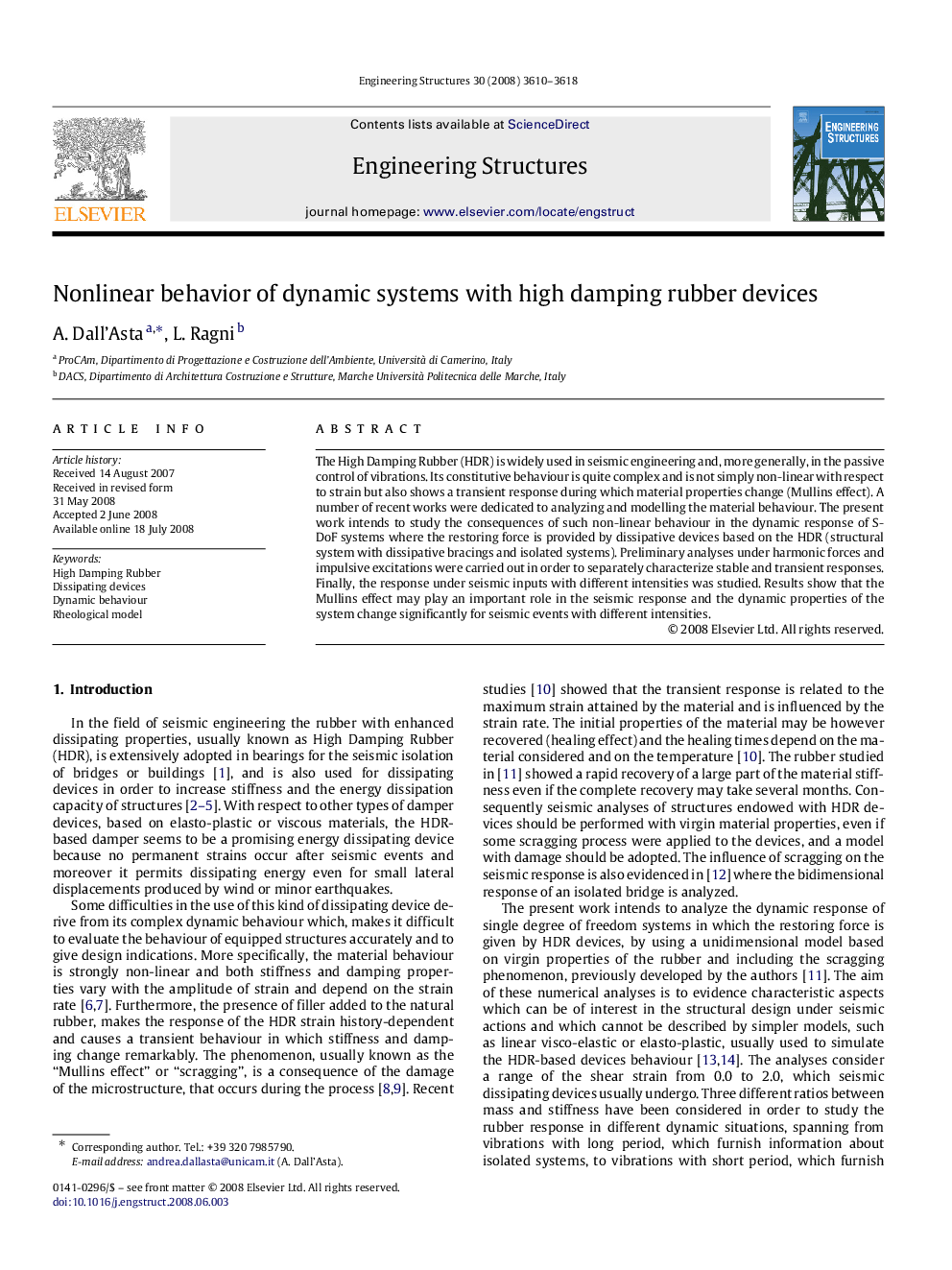| Article ID | Journal | Published Year | Pages | File Type |
|---|---|---|---|---|
| 269013 | Engineering Structures | 2008 | 9 Pages |
The High Damping Rubber (HDR) is widely used in seismic engineering and, more generally, in the passive control of vibrations. Its constitutive behaviour is quite complex and is not simply non-linear with respect to strain but also shows a transient response during which material properties change (Mullins effect). A number of recent works were dedicated to analyzing and modelling the material behaviour. The present work intends to study the consequences of such non-linear behaviour in the dynamic response of S-DoF systems where the restoring force is provided by dissipative devices based on the HDR (structural system with dissipative bracings and isolated systems). Preliminary analyses under harmonic forces and impulsive excitations were carried out in order to separately characterize stable and transient responses. Finally, the response under seismic inputs with different intensities was studied. Results show that the Mullins effect may play an important role in the seismic response and the dynamic properties of the system change significantly for seismic events with different intensities.
